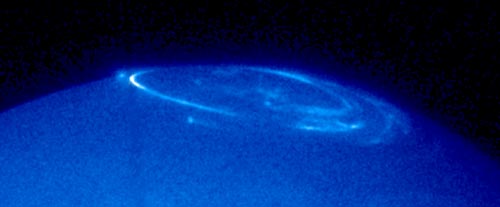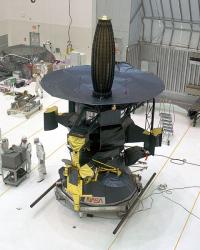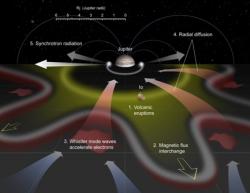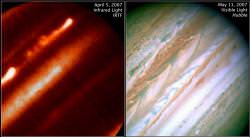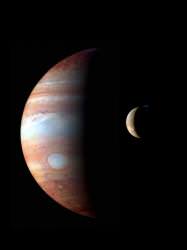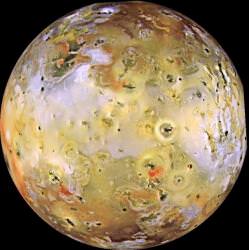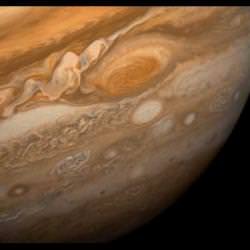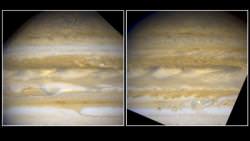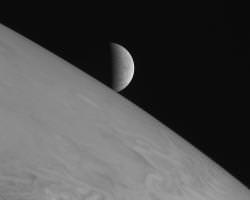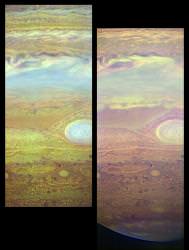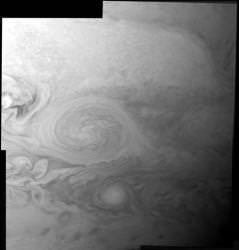Jupiter is a spotty place. There’s the aptly-named Great Red Spot – a large, long-lasting storm – that we all know and love, and new storms crop up every so often to create interesting features for astronomers both professional and amateur to study. The most recent discovery of new spots can only be seen in the UV, but they add a whole new level of complexity for scientists to chew on.
Io, one of Jupiter’s many moons, is volcanically active, and eruptions on the moon spew sulfur into the system. This sulfur is then ionized and swept up by Jupiter’s strong magnetosphere. Interactions between the ions and the magnetosphere cause aurora in the UV spectrum, similar to the phenomenon that makes the Northern Lights shine here on Earth. Io leaves a so-called ‘footprint’ on Jupiter in this way, and creates a glowing spiral shape on the northern and southern poles of the planet.
The rotation of Jupiter causes the spiral shape of the aurora: Io is ‘connected’ in one spot, and as Jupiter rotates it draws a glowing swirl of UV light around the pole. Astronomers had previously seen spots ‘downstream’ from the main spot caused by the interaction with Io, but these new images show a faint leading spot in front of the main one, essentially “upstream” in the flow of particles that causes the phenomenon.
A team from the University of Liège in Belgium discovered the spots in ultraviolet Hubble images taken of Jupiter. They found that when there were faint leading spots in one of the hemispheres, there were multiple spots in the other. The researchers propose that a beam of electrons is being transferred from one hemisphere to another, causing the fainter spots. The results of the study were published in the most recent edition of Geophysical Research Letters.
The image below illustrates the different mechanisms creating the auroral spots. The large torus around Jupiter is the plume of sulfur created by Io. The blue line between Io and Jupiter is where it is connected by the ionized sulfur, drawn in and funneled by Jupiter’s magnetosphere. The red lines illustrate the possible electron beams connecting the poles, which create the newly-discovered spots.
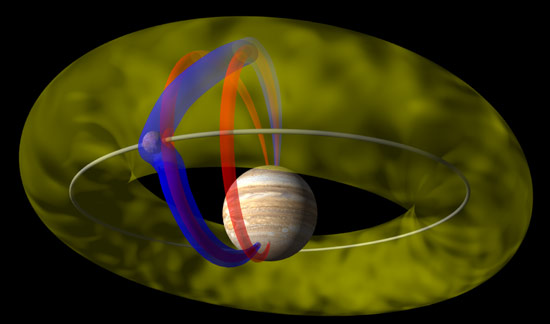
When Hubble is repaired in August, the researchers hope to take a closer look at the phenomenon and better understand this complex interaction.
Source: Eurekalert

